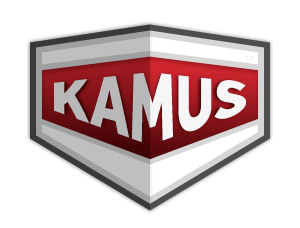mirrorˈmɪr ər
mirror (v)
- present
- mirrors
- past
- mirrored
- past participle
- mirrored
- present participle
- mirroring
mirror (n)
mirror
mirror
English Definitions:
mirror (noun)
polished surface that forms images by reflecting light
mirror (verb)
a faithful depiction or reflection
"the best mirror is an old friend"
mirror (verb)
reflect as if in a mirror
"The smallest pond at night mirrors the firmament above"
mirror (verb)
reflect or resemble
"The plane crash in Milan mirrored the attack in the World Trade Center"
mirror (Noun)
A smooth surface, usually made of glass with reflective material painted on the underside, that reflects light so as to give an image of what is in front of it.
mirror (Noun)
an object, person, or event that reflects or gives a picture of another.
mirror (Noun)
An exact copy of a data set, especially a website.
mirror (Verb)
Of an event, activity, behaviour, etc, to be identical to, to be a copy of.
mirror (Verb)
To create something identical to (a web site, etc.).
Mirror
A mirror is an object that reflects light in a way that preserves much of its original quality subsequent to its contact with the mirror. Some mirrors also filter out some wavelengths, while preserving other wavelengths in the reflection. This is different from other light-reflecting objects that do not preserve much of the original wave signal other than color and diffuse reflected light. The most familiar type of mirror is the plane mirror, which has a flat surface. Curved mirrors are also used, to produce magnified or diminished images or focus light or simply distort the reflected image. Mirrors are commonly used for personal grooming or admiring oneself, decoration, and architecture. Mirrors are also used in scientific apparatus such as telescopes and lasers, cameras, and industrial machinery. Most mirrors are designed for visible light; however, mirrors designed for other types of waves or other wavelengths of electromagnetic radiation are also used, especially in non-optical instruments.
Mirror
A mirror is an object that reflects an image. Light that bounces off a mirror will show an image of whatever is in front of it, when focused through the lens of the eye or a camera. Mirrors reverse the direction of the image in an equal yet opposite angle from which the light shines upon it. This allows the viewer to see themselves or objects behind them, or even objects that are at an angle from them but out of their field of view, such as around a corner. Natural mirrors have existed since prehistoric times, such as the surface of water, but people have been manufacturing mirrors out of a variety of materials for thousands of years, like stone, metals, and glass. In modern mirrors, metals like silver or aluminum are often used due to their high reflectivity, applied as a thin coating on glass because of its naturally smooth and very hard surface. A mirror is a wave reflector. Light consists of waves, and when light waves reflect off the flat surface of a mirror, those waves retain the same degree of curvature and vergence, in an equal yet opposite direction, as the original waves. The light can also be pictured as rays (imaginary lines radiating from the light source, that are always perpendicular to the waves). These rays are reflected at an equal yet opposite angle from which they strike the mirror (incident light). This property, called specular reflection, distinguishes a mirror from objects that diffuse light, breaking up the wave and scattering it in many directions (such as flat-white paint). Thus, a mirror can be any surface in which the texture or roughness of the surface is smaller (smoother) than the wavelength of the waves. When looking at a mirror, one will see a mirror image or reflected image of objects in the environment, formed by light emitted or scattered by them and reflected by the mirror towards one's eyes. This effect gives the illusion that those objects are behind the mirror, or (sometimes) in front of it. When the surface is not flat, a mirror may behave like a reflecting lens. A plane mirror will yield a real-looking undistorted image, while a curved mirror may distort, magnify, or reduce the image in various ways, while keeping the lines, contrast, sharpness, colors, and other image properties intact. A mirror is commonly used for inspecting oneself, such as during personal grooming; hence the old-fashioned name looking glass. This use, which dates from prehistory, overlaps with uses in decoration and architecture. Mirrors are also used to view other items that are not directly visible because of obstructions; examples include rear-view mirrors in vehicles, security mirrors in or around buildings, and dentist's mirrors. Mirrors are also used in optical and scientific apparatus such as telescopes, lasers, cameras, periscopes, and industrial machinery. The terms "mirror" and "reflector" can be used for objects that reflect any other types of waves. An acoustic mirror reflects sound waves. Objects such as walls, ceilings, or natural rock-formations may produce echos, and this tendency often becomes a problem in acoustical engineering when designing houses, auditoriums, or recording studios. Acoustic mirrors may be used for applications such as parabolic microphones, atmospheric studies, sonar, and sea floor mapping. An atomic mirror reflects matter waves, and can be used for atomic interferometry and atomic holography.
Citation
Use the citation below to add this dictionary page to your bibliography:
Style:MLAChicagoAPA
"mirror." Kamus.net. STANDS4 LLC, 2024. Web. 26 Apr. 2024. <https://www.kamus.net/english/mirror>.

Discuss this bahasa indonesia mirror translation with the community:
Report Comment
We're doing our best to make sure our content is useful, accurate and safe.
If by any chance you spot an inappropriate comment while navigating through our website please use this form to let us know, and we'll take care of it shortly.
Attachment
You need to be logged in to favorite.
Log In